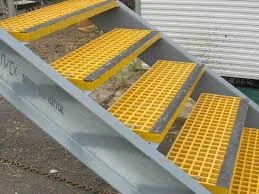
-
 Afrikaans
Afrikaans -
 Albanian
Albanian -
 Amharic
Amharic -
 Arabic
Arabic -
 Armenian
Armenian -
 Azerbaijani
Azerbaijani -
 Basque
Basque -
 Belarusian
Belarusian -
 Bengali
Bengali -
 Bosnian
Bosnian -
 Bulgarian
Bulgarian -
 Catalan
Catalan -
 Cebuano
Cebuano -
 China
China -
 China (Taiwan)
China (Taiwan) -
 Corsican
Corsican -
 Croatian
Croatian -
 Czech
Czech -
 Danish
Danish -
 Dutch
Dutch -
 English
English -
 Esperanto
Esperanto -
 Estonian
Estonian -
 Finnish
Finnish -
 French
French -
 Frisian
Frisian -
 Galician
Galician -
 Georgian
Georgian -
 German
German -
 Greek
Greek -
 Gujarati
Gujarati -
 Haitian Creole
Haitian Creole -
 hausa
hausa -
 hawaiian
hawaiian -
 Hebrew
Hebrew -
 Hindi
Hindi -
 Miao
Miao -
 Hungarian
Hungarian -
 Icelandic
Icelandic -
 igbo
igbo -
 Indonesian
Indonesian -
 irish
irish -
 Italian
Italian -
 Japanese
Japanese -
 Javanese
Javanese -
 Kannada
Kannada -
 kazakh
kazakh -
 Khmer
Khmer -
 Rwandese
Rwandese -
 Korean
Korean -
 Kurdish
Kurdish -
 Kyrgyz
Kyrgyz -
 Lao
Lao -
 Latin
Latin -
 Latvian
Latvian -
 Lithuanian
Lithuanian -
 Luxembourgish
Luxembourgish -
 Macedonian
Macedonian -
 Malgashi
Malgashi -
 Malay
Malay -
 Malayalam
Malayalam -
 Maltese
Maltese -
 Maori
Maori -
 Marathi
Marathi -
 Mongolian
Mongolian -
 Myanmar
Myanmar -
 Nepali
Nepali -
 Norwegian
Norwegian -
 Norwegian
Norwegian -
 Occitan
Occitan -
 Pashto
Pashto -
 Persian
Persian -
 Polish
Polish -
 Portuguese
Portuguese -
 Punjabi
Punjabi -
 Romanian
Romanian -
 Russian
Russian -
 Samoan
Samoan -
 Scottish Gaelic
Scottish Gaelic -
 Serbian
Serbian -
 Sesotho
Sesotho -
 Shona
Shona -
 Sindhi
Sindhi -
 Sinhala
Sinhala -
 Slovak
Slovak -
 Slovenian
Slovenian -
 Somali
Somali -
 Spanish
Spanish -
 Sundanese
Sundanese -
 Swahili
Swahili -
 Swedish
Swedish -
 Tagalog
Tagalog -
 Tajik
Tajik -
 Tamil
Tamil -
 Tatar
Tatar -
 Telugu
Telugu -
 Thai
Thai -
 Turkish
Turkish -
 Turkmen
Turkmen -
 Ukrainian
Ukrainian -
 Urdu
Urdu -
 Uighur
Uighur -
 Uzbek
Uzbek -
 Vietnamese
Vietnamese -
 Welsh
Welsh -
 Bantu
Bantu -
 Yiddish
Yiddish -
 Yoruba
Yoruba -
 Zulu
Zulu
frp stub flange
Understanding FRP Stub Flanges A Comprehensive Overview
In the realm of industrial applications, the materials and components we choose can significantly influence the performance, durability, and efficiency of a system. One such component that has gained popularity in various industries is the Fiberglass Reinforced Plastic (FRP) stub flange. This article delves into the characteristics, advantages, and applications of FRP stub flanges, highlighting their importance in modern engineering.
What is an FRP Stub Flange?
An FRP stub flange is a type of flange made from fiberglass reinforced plastic, which combines the strength and durability of fiberglass with the lightweight nature of plastic. This combination provides a robust solution for numerous applications, particularly in environments prone to corrosion and high stress. The stub flange is designed to connect different piping systems while also serving as a support mechanism, allowing for a secure assembly of components.
Characteristics of FRP Stub Flanges
1. Corrosion Resistance One of the standout features of FRP materials is their inherent resistance to chemical corrosion. This makes FRP stub flanges an ideal choice for industries such as chemical processing, wastewater treatment, and marine applications, where aggressive substances can deteriorate traditional metal components.
2. Lightweight Unlike metal flanges, FRP stub flanges are significantly lighter, which eases installation and reduces the load on supporting structures. This attribute is particularly valuable in applications where weight considerations are crucial, such as in overhead piping systems.
3. High Strength-to-Weight Ratio FRP materials have a remarkable strength-to-weight ratio, enabling them to withstand high pressures and temperatures, making them suitable for various industrial processes.
4. Customizable Design FRP stub flanges can be manufactured to specific measurements and shapes, allowing for tailored solutions that meet the unique requirements of different projects.
Advantages of Using FRP Stub Flanges
frp stub flange

1. Cost-Effectiveness While the initial investment in FRP stub flanges may be higher than traditional materials, their longevity and reduced maintenance costs often make them a more economical choice in the long run. Their resistance to corrosion minimizes the need for frequent replacements.
2. Ease of Installation The lightweight nature of FRP stub flanges facilitates easier handling and installation, reducing labor costs and time associated with assembly.
3. Thermal Insulation FRP has excellent insulation properties, which can be beneficial in thermal management applications. This reduces energy losses and improves overall system efficiency.
4. Environmental Impact FRP materials are often considered more environmentally friendly than conventional materials, as they can reduce emissions and waste in various applications. Moreover, their longevity contributes to sustainable practices within industries.
Applications of FRP Stub Flanges
FRP stub flanges find their applications across a variety of sectors
- Chemical Processing In environments where corrosive chemicals are prevalent, FRP stubs provide reliable solutions to maintain system integrity. - Water and Wastewater Management The durability and corrosion resistance of FRP make them ideal for piping systems in water treatment plants and sewage facilities. - Oil and Gas Industry FRP stub flanges are used in offshore applications where traditional materials might fail due to harsh environmental conditions. - Power Generation They are employed in cooling systems and other applications within power plants, contributing to improved operational efficiency.
Conclusion
FRP stub flanges represent a significant advancement in piping technology, combining durability, lightweight, and resistance to environmental challenges. Their properties make them a preferred choice in various industries, paving the way for innovative applications. As industries continue to seek more efficient and sustainable solutions, the adoption of FRP components will likely grow, reaffirming their role as an indispensable part of modern engineering. By understanding the benefits and capabilities of FRP stub flanges, companies can make informed decisions that enhance their operational effectiveness and longevity of their systems.









